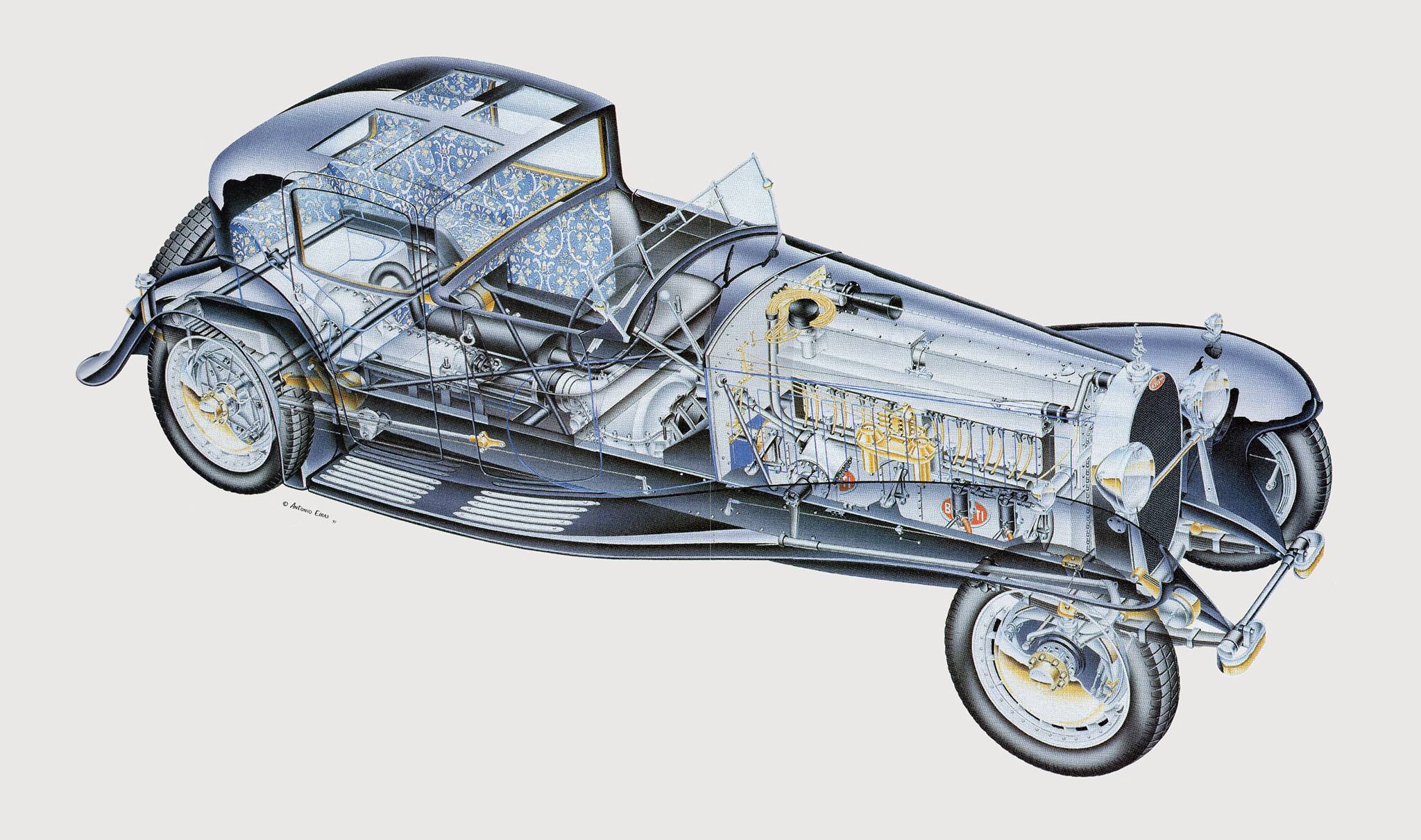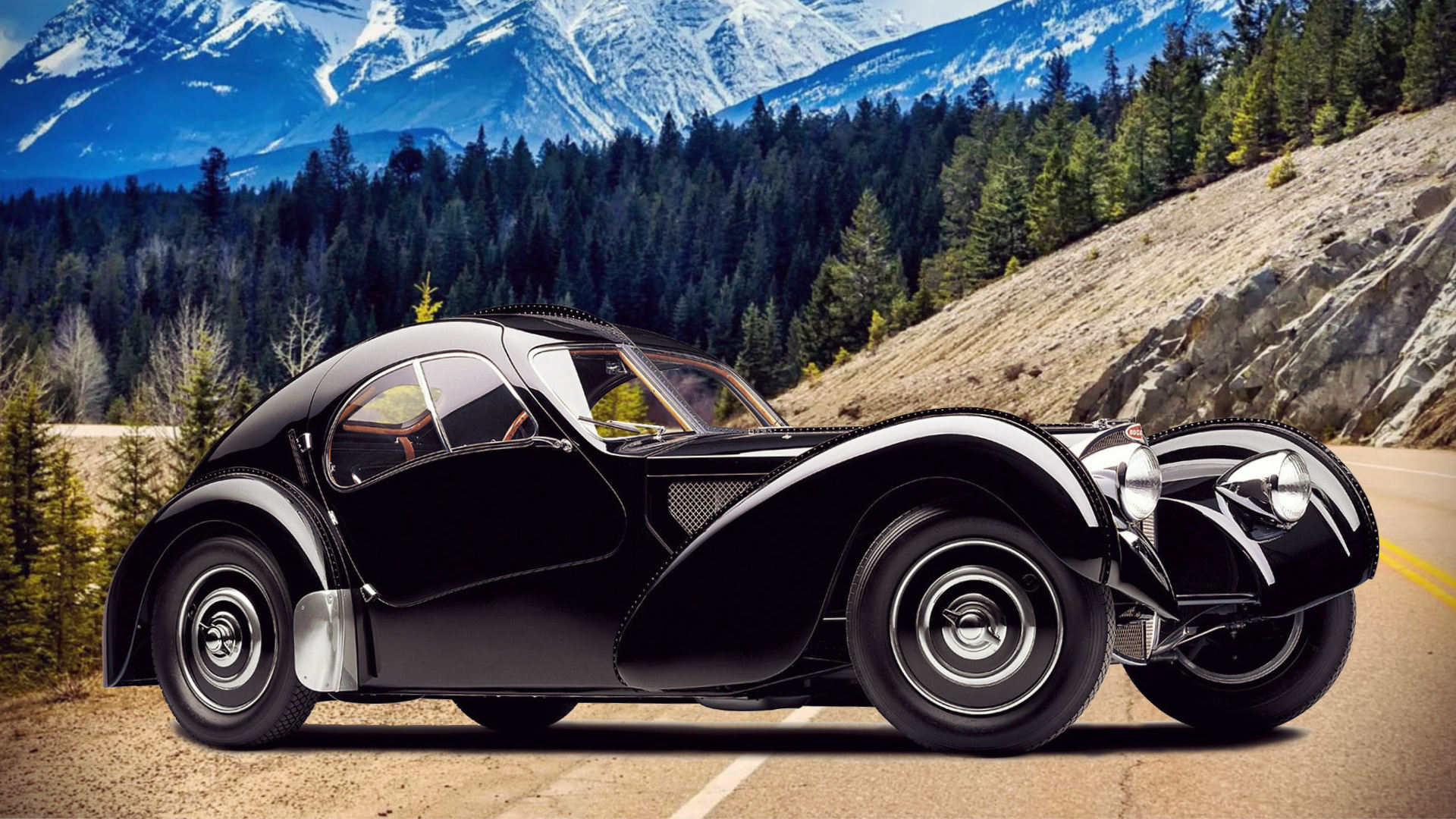Spring of 1938 finds Archimedes “Archie” Antonescu a wealthy Romanian playboy deep into his grand plan. He intends to startle the automotive racing world by entering a dazzlingly brilliant custom Bugatti in the 1939 Monte Carlo Rally. At the same time, over two thousand driving miles and a world away, an Estonian farmer lives his rural life unaware of an onrushing future placing him on a collision course with the Romanian Playboy’s dream of racing glory.
In Search of the 7th Royale (Part 3 – The path to Estonia)

1st Bugatti Royale owned by Ettore Bugatti
June of 1938 found Estonia, like the rest of Europe, embroiled in turmoil. Furthermore given the historically tenuous state of Estonian independence and its painful location at the crossroads of Nazi and Soviet communist expansionist dreams, stability and hope existed in increasingly short supply. As well, at the same time, Estonian farmer and metal worker Jaak Oja faced a deeply personal and agonizing ferment that plagued his family and its future.
Ferment arose not as a product of the Oja farm but from the world around it. The farm itself presented a paradigm of self-sufficiency. In addition to livestock, fields of vegetables and an orchard, the farm’s quadrant of buildings included a forge and a blacksmith shop. Jaak had a reputation not only as a good farmer but an excellent metal worker. While the land itself offered solace and the joy of family, the politics infecting all Estonian life engulfed Jaak’s farm in the tumult of nations and people in conflict.
As incongruous as it would seem, subjugation formed a major theme in the history of the freedom loving industrious people of the small Baltic nation of Estonia. The beginning of the 20th century witnessed the Russian Revolution of 1905. Led by the mercilessly cruel Bolsheviks the chaos washed across Estonian soil leaving the bitter memory of indiscriminate brutality and senseless death in its wake. Jaak remembered his mother, Elise Oja, recalling the horror of Russian Bolsheviks flooding into her town. There they randomly rounded up 90 or so Estonian men and trucked them to an opening in the nearby forest. At the side of a great ditch the Russians shot them all creating a mass grave. Elise would, could, never forget.
During WWI in early 1918 a Russia weakened by the Revolution retreated from Estonia. Taking advantage of the Russian departure, Estonia on February 24, 1918 declared its independence. One day later on February 25, 1918 Germany declared the independent government of Estonia illegal and occupied the nation. This repeated, yet once again, Estonia’s role as a pawn in the global power games of bigger nations.
With the end of WWI and Germany’s defeat, an independent Estonia reemerged. During this relatively brief period of hard fought for independence, the country would suffer under the constant threat of Russian-led communist insurrection. Then with the rise of Nazi imperialism in the 1930s the intensity of the Russian Communist and German Nazi tug of war over who would ultimately wrest control of Estonia from the Estonians infused many of the Estonian peoples with dread. Such worries haunted Jaak and his wife Ann. However, for their democracy loving son, Mihkel, fury trumped worry.

Cutaway of 1st Royale, chassis #41100
As a spirited, well read and patriotic Estonian teenager Mihkel abided by neither the politics nor the brutality of the German Nazis and the Russian Communists. He expressed his beliefs openly and actively by vigorously advocating for Estonian independence. In turn, neither local Nazi nor communist sympathizers would have felt the least bit saddened by Mihkel’s demise. With the simmering European cauldron of conflict coming to a heated boil and spilling into Estonia, Mihkel’s advocacy and visibility marked him as a target for the powerful enemies of Estonian freedom. Both Jaak and Ann sadly understood that their son would not survive the evil fast approaching. Elise Oja’s painful stories of the invading Bolshevik atrocities in 1905 lurked among the dark fears in their hearts and minds. In accepting a painful truth, Jaak and Ann recognized the stark choice Mihkel faced. Better for Mihkel to continue his life elsewhere than to lose it in his homeland. Mihkel understood he had no choice but to leave.
The new moon of June 17, 1938 concealed 18-year old Mihkel as he slipped into the night leaving in his wake the parents he loved so dearly. He did not look back. He could not bear to. The gritty scuffing of his work boots made the only sound. He paused at the wooden gate. He took a deep breath. With his next steps he would leave his home and old life behind and flee to exactly what final destination he did not, yet, know, though America filled his dreams.
His first stop would be a visit with an old friend, Juri, who had moved away from town. They both loved to hunt and fish. They excelled at living off the land. Now, living a good distance from the Oja farm, Juri raised sled dogs and ran dog teams that brought supplies to isolated encampments in winter.
Mihkel, in his heart feared he would never see his beloved Oja family farm again. He was wrong.
On the evening of that same June 17th but a world away, Jean Bugatti returned the mighty beast to the grounds of the Bugatti factory complex. He had driven hard and fast across the back roads of the nearby town of Duppigheim on surfaces both rough and smooth. He frequently tested vehicles there. He had demanded much of his creation on this its first test drive. Now, like a victorious Roman general astride a magnificently imposing war horse he brought the massive bespoke re-imagined Royale to a confident halt. Though cloaked in a cobbled up unexceptional body (all the better to promote the secrecy so important to “The Romanian”), this chassis and engine would be the heart and performance soul of the client’s Royale.
Upon entering the Bugatti grounds Jean bellowed in exultation to the French workers awaiting his return, “Vraiment une voiture fantastique! (A truly fantastic car!)

Bugatti Type 57 SC
The athleticism of Jean Bugatti’s creation left him stunned. As the exhilaration of his experience behind the wheel resolved into comprehension, he had no doubt. This sublime expression of masculine beauty and athletic perfection would more than satisfy the goddess of speed. Nothing before, including his magnificent Type 57 SC, had ever brought to life such a glorious and seamless expression of his engineering and creative genius. At speed, it stole his breath.
Jean Bugatti, serenaded by the deep sonorous purr of the massive supercharged 12-liter straight eight, eased the Royale into the secure structure dedicated to the production of this vehicle alone. Easily a ton lighter than all earlier Royales while boasting an independent front suspension, the chassis, so nimble for such a large vehicle, inspired confidence. With 4-wheel drive benefiting from the use of CV joints in front, its ability to tame roads afflicted with ruts, mud and every irregularity conceivable astounded even its designer. Yes, some tuning, tweaks and testing remained to bring it to perfection, but Jean confidently believed that all the heavy lifting had been done. However, Ettore Bugatti, while no less impressed, felt far less sanguine.
Ettore by returning from retirement to actively oversee daily operations on “the Romanian’s” Royale had freed Jean to focus on the delights of engineering and design without the drudgery of monitoring deadlines. As a result of Jean’s immersion in the pursuit of perfection in both chassis and body design he distanced himself from the demands of the impending deadline. Ettore for the most part bore that burden and it seemed to be getting heavier every day. Worse, acting as if the Monte Carlo Rally deadline might slip Ettore’s mind, “The Romanian” added to the stress by calling with a disquieting frequency.
To meet the demands to prepare the car, transport it to Tallinn and be ready for the January 25th start date for the 1939 Monte Carlo Rally, Ettore felt delivery should take place by November 1st of 1938, All Saint’s Day, and certainly no later than November 11th French Armistice Day. Luckily Jean had made heroic strides with the mechanicals, and the body design. Ah yes, the body design. Ettore simple described Jean’s re-imagined Royale design as a car enthusiast’s visual wonderland. A masculine expression of effortless motion and power whether at speed or at rest, its lines, both graceful and purposeful, captured the eye and the imagination. Already approved by “the Romanian,” Jean’s creation of this masterpiece seemed effortless as if the design gods channeled their soul through his hand.
Ettore’s earlier choice of Gangloff coachworks for its convenience, superior workmanship and almost telepathic insight into what Bugatti wanted even if he could not exactly express it, at this pivotal moment, would pay handsome dividends. With Bugatti’s Type 57 Gangloff had demonstrated in their coach building an uncanny ability to capture and execute the soul of an iconic design. They would be called upon to do so for Jean’s re-imagined Royale. They also understood the importance and financial reward for maintaining secrecy. Under Ettore’s strained eyes all seemed to be proceeding as hoped. However, not so the case with “the Romanian” Archie.

Konstantin Pats
As the late fall delivery date of his Royale approached, Archie’s experiences over the recent summer months delivered a powerful and disturbing reality that rattled his world. With his Bugatti build exceeding his wildest dreams he had the opportunity to test drive the naked chassis with the cobbled body. It quickly became evident that the car’s potential far exceeded his driving skills. The car frightened him. Reeling from a potential knockout blow to his dreams, Archie focused all his resources on a summer of driving lessons from the most renowned drivers he could hire, including Jean himself. Now with delivery set for the first week of November, Archie having been schooled by the best would connect with his Royale in Tallinn. Putting his wealth to work he bought a sprawling tract of Estonian woodlands. There the isolated roads would allow him to secretly apply his new skills and practice taming his beautiful Bugatti “Pur Sang” thoroughbred.
With winter approaching, Mihkel warmed his hands by the fireplace. Juri’s rustic hunting cabin near the small town of Maardu east of Tallinn had become Mihkel’s refuge as he sought a plan for escaping his homeland. It would not be easy. Estonian President and heavy-handed dictator Konstantin Päts had closed the borders, muzzled the press, squelched dissenting opinion and basically put the country in lockdown.
Mihkel’s efforts to escape from the dangerous political cross currents of his Estonian homeland presented few choices, none of them especially promising. As 1939 approached with Estonians being killed by communists, the future looked bleak for Mihkel. It was about to get worse.

I still think this 1927 Bugatti Type 41 Royale Coupe Napoleon is one of the most beautiful cars ever designed. Now I just have to extend my garage! Very nice historical narrative Burton!
Thanks for the feedback. Everyone wants to extend their garage …Space the final frontier!